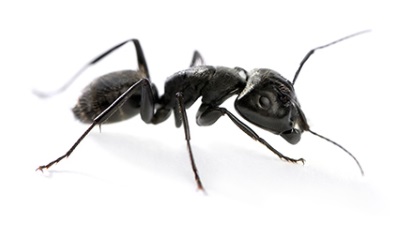More About Pest Control Chicago
More About Pest Control Chicago
Blog Article
Pest Control Chicago - The Facts
Table of ContentsThe Definitive Guide to Pest Control ChicagoWhat Does Pest Control Chicago Do?Pest Control Chicago for DummiesNot known Facts About Pest Control ChicagoThe 10-Second Trick For Pest Control ChicagoAll about Pest Control Chicago
Growing or gathering a plant before (or after) a bug is present lowers bug damages by avoidance. Capturing and computing an insect's growing level days can help with planning around a parasite's lifecycle. Damage tolerance can sometimes be attained by planting a crop early to make sure that the plants are more powerful, more resistant, and extra tolerant to damage by the time insect bugs are existing.
By producing a small, regulated room that the pests prefer, it is possible to divert insects far from the key crop. 2 strategies for this are catch cropping and strip harvesting. is growing a recommended host plant of an insect parasite near the primary crop that is to be shielded.
If needed, the parasites can then be killed in the trap plant. Catch plants can be any species that the parasite preferseven be the same types as the main plant - Fast pest elimination Chicago. If the trap crop is the exact same types as the primary crop, it should be planted at a time that will certainly best entice the insect away from the primary plant
Getting My Pest Control Chicago To Work
 This practice serves when gathering a trap crop because it preserves some habitat for the insect. Therefore, the parasite does not relocate to find brand-new environment in a nearby higher worth or even more at risk plant. https://triberr.com/pstc0ntrlchg. The strategies already discussed concentrate on reducing plant direct exposure to insect pests, yet it is also possible to lower yield loss even when insect damage takes place
This practice serves when gathering a trap crop because it preserves some habitat for the insect. Therefore, the parasite does not relocate to find brand-new environment in a nearby higher worth or even more at risk plant. https://triberr.com/pstc0ntrlchg. The strategies already discussed concentrate on reducing plant direct exposure to insect pests, yet it is also possible to lower yield loss even when insect damage takes placeTo exercise IPM in the landscape, select plants that are well suited to the site. Plant them properly and maintain the plants healthy and balanced by thoroughly sprinkling, fertilizing, and pruning them. See out for issues on your plants as they arise. If a bug or condition causes undesirable damages regardless of preventative efforts, select a reliable monitoring technique that will certainly have the least amount of influence on various other living animals and the atmosphere.
Not known Factual Statements About Pest Control Chicago
 Search for symptoms the plant shows as a result of insect activity. Analyze your plants usually. Determine your plants to ensure that the twisted fallen leaves, uncommon coloration, or strange-looking frameworks you see are not a normal component of the plant. Try to rule out site-related troubles by ensuring that the dirt type, water drainage problems, fertility degree, and other environmental problems agree with for the plant.
Search for symptoms the plant shows as a result of insect activity. Analyze your plants usually. Determine your plants to ensure that the twisted fallen leaves, uncommon coloration, or strange-looking frameworks you see are not a normal component of the plant. Try to rule out site-related troubles by ensuring that the dirt type, water drainage problems, fertility degree, and other environmental problems agree with for the plant.Bugs and termites frequently are related to certain plants, and they comply with particular advancement and actions patterns as the season advances. Use referral books from the library or yard center to recognize insects. If you can not locate an accurate summary there, get in touch with someone in your regional expansion workplace. Discover the pest's life cycle, behavior, and natural enemies.
If so, an application of a nonselective insecticide might eliminate them, enabling the pest population to rebound uninhibited by predators and parasites, which may have been giving considerable control. If a control is required, take into consideration physical or biorational approaches initially. If they are unavailable or impractical, you may require to thoroughly utilize a traditional chemical control.
Examine This Report on Pest Control Chicago
 As an example, some aphids and mites can be ripped off by spraying the plant with water. Bagworm larvae can be chosen off an infested plant. You can utilize traps to catch specific insects, and obstacles to protect plants from insect assault or condition infection. One efficient approach for controlling gypsy moth larvae on tiny numbers of trees is to place a band of folded up cloth around the tree trunk to provide a man-made relaxing site for the caterpillars, and after that destroy the caterpillars that gather there.
As an example, some aphids and mites can be ripped off by spraying the plant with water. Bagworm larvae can be chosen off an infested plant. You can utilize traps to catch specific insects, and obstacles to protect plants from insect assault or condition infection. One efficient approach for controlling gypsy moth larvae on tiny numbers of trees is to place a band of folded up cloth around the tree trunk to provide a man-made relaxing site for the caterpillars, and after that destroy the caterpillars that gather there.In some cases, the finest service may be literally eliminating the plant and replacing it with one that will certainly not be affected by the pest or disease. The first group consists of living microorganisms that can kill the bug.
Bloodsuckers reside on and typically kill one more organism, called the host. Some parasitic wasps utilize caterpillars, whiteflies, aphids, and soft ranges as hosts. An instance of an approach that makes use of a normally taking place biochemical is the bacterium Bacillus thuringiensis (Bt). Bt contains a protein that is poisonous to specific pests, yet safe to other microorganisms.
Some Ideas on Pest Control Chicago You Should Know
When the delicate insect parasite feeds this post upon the splashed leaves, it will ingest the protein and be eliminated. Traditional chemicals are utilized only as a last resource in an IPM program, but in some cases are one of the most effective methods of control. To have the best effect, these products need to be applied on a specific component of the plant when the pest is most prone.
In many situations, environmentally risk-free chemicals such as horticultural oil or insecticidal soap are efficient selections - https://www.intensedebate.com/people/pstc0ntrlchg. Again, applications have to be timed thoroughly to have the best impact on the parasite insect population. Due to the fact that they have no residual task after they have dried out, soaps and oils are typically the alternative that is the least turbulent to populaces of useful microorganisms
These words, from least poisonous to most hazardous are: "caution," "caution," and "danger." Utilize these words as standards to help you select the least dangerous material among the reliable alternatives. For many landscape parasites, you need to consider pesticides in just the initial two classifications. Some chemical solutions can be applied just by applicators with unique training and who are accredited by the state's division of farming.
Unknown Facts About Pest Control Chicago
Refer to the Woody Ornamental Insect, Termite, and Illness Administration Guide, published by Penn State Expansion, or to an additional existing recommendation for a listing of materials that are registered for usage on plants in your state. Check out the label to make sure that you have selected an item that works against the insect you have recognized, and select your timing based upon professional recommendations.
Report this page